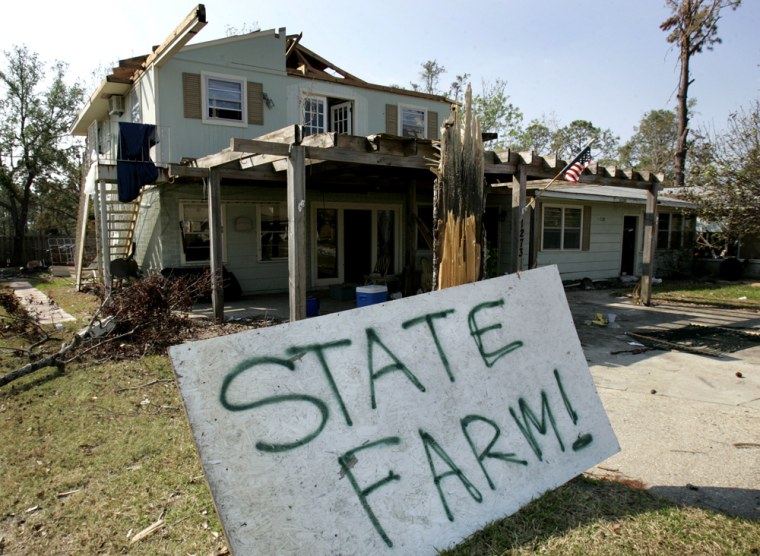The U.S. insurance industry is either resilient or arrogant — or maybe both.
After a hurricane-ravaged year that was the worst in the industry’s history, insurers are thriving again. Several are raising premiums, cutting coverage and some may be ready to buy back their own stock or acquire other companies.
“The industry has managed the massive losses of the 2005 hurricane season and is enjoying the profits and healthy balance sheets that have resulted from a continued hard market,” said Standard & Poor’s analyst Simon Marshall. A hard market is one where it is difficult for customers to get insurance and insurers can boost premiums.
Last year cost property and casualty insurers $57 billion from three super-storms, including Hurricane Katrina, which devastated New Orleans.
And insurance experts predict another bitter Atlantic hurricane season starting on June 1, with as many as five major hurricanes expected to slam into the United States.
But insurers have abundant capital to pay claims. Some are so flush they have hinted at stock buybacks or acquisitions, despite huge claims from two unusually busy storm seasons.
While the 2005 hurricanes kept property casualty carriers from profiting in 2005, premiums grew by 2.2 percent to $481.8 billion, according to A.M. Best Co., which rates the industry. Assets rose 8.3 percent to $1.3 trillion as frightened homeowners and businesses bought more policies.
American International Group, Inc., or AIG, the world’s largest insurer, said in March it could handle another year like 2004, when storms blew down or washed away $27 billion of insured property, mostly in Florida.
But AIG plans to reduce coverage by 20 percent to 25 percent in catastrophe-prone areas, such as New Orleans. And it also will increase wind and flood deductibles by as much as 5 percent and raise premiums by up to 30 percent, according to Kevin Kelly, chairman and chief executive of AIG’s Lexington Insurance Co. unit.
One new Florida insurer wants a 92 percent premium hike.
Allstate Corp., which did not cover the policies it wrote in Louisiana with reinsurance, posted $3 billion in losses after Katrina and Rita smashed the Gulf Coast.
Fearing another hurricane could travel up the U.S. East Coast, Allstate is cutting its homeowners’ exposure as far north as New York City.
Reinsurers, which sell backup coverage to retail insurers, paid out more than $20 billion in hurricane claims, forcing carriers like Quanta Capital Holdings Ltd. and PXRE Group Ltd. to consider selling or liquidating.
But private equity and hedge funds are now flooding into the reinsurance market, seeking to profit from rising premiums. They have raised $18.6 billion to buy reinsurers in Bermuda, where much of the market is located, according to a study by British Insurance broker Benfield Group Ltd.
“When any sector is under a cloud it’s a great time to get in - if you know where the opportunities are,” said Prakash Melwani, senior managing director of the Blackstone Group, which has invested in reinsurers Aspen Insurance Holdings Ltd. , Axis Capital Holdings Ltd. and Ariel Reinsurance Ltd.
There are signs that the industry’s longer-term outlook may be less rosy.
Risk modeling firms, which badly underestimated last year’s losses, are increasing their storm-loss predictions by at least 40 percent and rating agencies are demanding insurers keep more reserves to cover possible losses.
Bigger reserves, along with likely pressure from regulators not to raise rates, could squeeze profits.
“By 2010 we could see $100 billion in catastrophe losses in a single year,” said Robert Hartwig, chief economist of the Insurance Information Institute.
